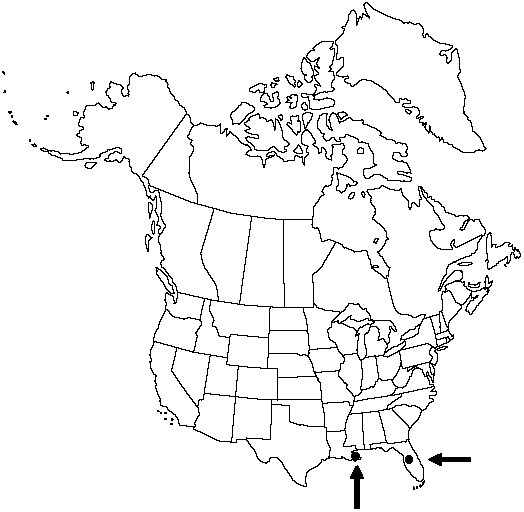Difference between revisions of "Diplazium esculentum"
J. Bot. (Schrader) 1801(2): 312. 1803.
Common names: Vegetable fern
Basionym: Hemionitis esculenta Retzius
Treatment appears in FNA Volume 2.
FNA>Volume Importer |
FNA>Volume Importer |
||
| Line 20: | Line 20: | ||
}}<!-- | }}<!-- | ||
| − | --><span class="statement" id="st- | + | --><span class="statement" id="st-undefined" data-properties=""><b>Stems </b>erect; scales brown, linear-lanceolate, margins dentate. <b>Petiole</b> 30–60 cm. <b>Blade</b> ovate, 2-pinnate to 2-pinnate-pinnatifid, 50–100 × 15–50 cm, base ± narrowed, apex abruptly acuminate. <b>Pinnae</b> 1-pinnate to 1-pinnate-pinnatifid. <b>Pinnules</b> oblong, base ± truncate, ± auriculate, apex acuminate, incised or lobed halfway to costule. <b>Veins</b> pinnate, anastomosing. <b>Sori</b> elongate, single or double, indusiate; indusia vaulted, thin, erose. <b>2n</b> = 82.</span><!-- |
-->{{Treatment/Body | -->{{Treatment/Body | ||
| Line 45: | Line 45: | ||
|elevation=0 m | |elevation=0 m | ||
|distribution=Fla.;La.;se Asia;Africa. | |distribution=Fla.;La.;se Asia;Africa. | ||
| + | |introduced=true | ||
|reference=None | |reference=None | ||
|publication title=J. Bot. (Schrader) | |publication title=J. Bot. (Schrader) | ||
|publication year=1803 | |publication year=1803 | ||
|special status= | |special status= | ||
| − | |source xml=https://jpend@bitbucket.org/aafc-mbb/fna- | + | |source xml=https://jpend@bitbucket.org/aafc-mbb/fna-data-curation.git/src/9216fc802291cd3df363fd52122300479582ede7/coarse_grained_fna_xml/V2/V2_262.xml |
|genus=Diplazium | |genus=Diplazium | ||
|species=Diplazium esculentum | |species=Diplazium esculentum | ||
| − | |||
| − | |||
| − | |||
| − | |||
| − | |||
| − | |||
| − | |||
| − | |||
| − | |||
| − | |||
| − | |||
| − | |||
| − | |||
| − | |||
| − | |||
| − | |||
| − | |||
| − | |||
| − | |||
| − | |||
| − | |||
| − | |||
| − | |||
}}<!-- | }}<!-- | ||
-->[[Category:Treatment]][[Category:Diplazium]] | -->[[Category:Treatment]][[Category:Diplazium]] | ||
Revision as of 14:15, 27 July 2019
Stems erect; scales brown, linear-lanceolate, margins dentate. Petiole 30–60 cm. Blade ovate, 2-pinnate to 2-pinnate-pinnatifid, 50–100 × 15–50 cm, base ± narrowed, apex abruptly acuminate. Pinnae 1-pinnate to 1-pinnate-pinnatifid. Pinnules oblong, base ± truncate, ± auriculate, apex acuminate, incised or lobed halfway to costule. Veins pinnate, anastomosing. Sori elongate, single or double, indusiate; indusia vaulted, thin, erose. 2n = 82.
Habitat: Moist soil near stream
Elevation: 0 m
Distribution

Fla., La., se Asia, Africa.
Discussion
Originally a tropical Eastern Hemisphere species, Diplazium esculentum is introduced in North America. This fern is used as a vegetable in eastern and southeastern Asia.
Selected References
None.
Lower Taxa
None.